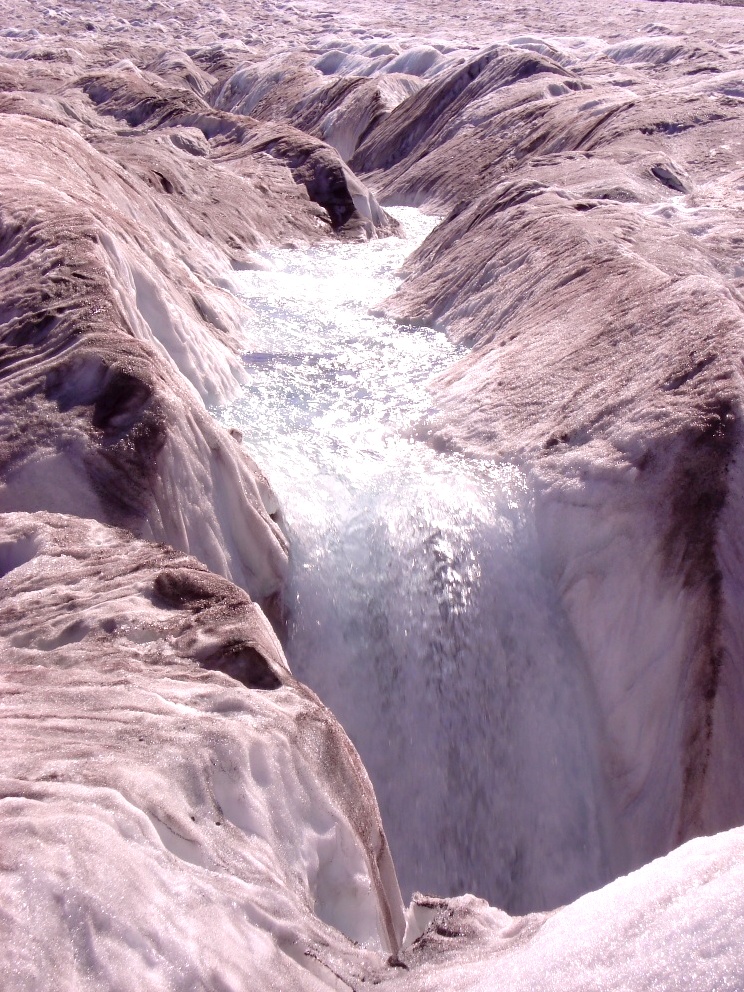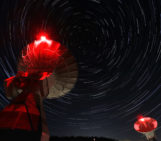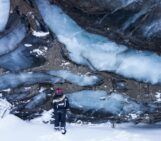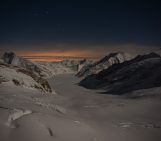
Moulin . Credit: Stephanie Grand (distributed via imaggeo.egu.eu)
The Athabasca Glacier is located in Jasper National Park, in the Canadian Rockies. It is the largest of seven named distributary glaciers carrying ice away from the Columbia Icefield, the largest icefield in the Rocky Mountains. This picture shows a summer meltwater stream running on the surface of the ice disappear in a moulin – a vertical shaft forming part of the glacier’s internal plumbing system. After entering the moulin, the meltwater may flow through englacial streams before reaching the bottom of the glacier, where it forms a glacial deposit known as a kame (see this video for a description of kame formation processes filmed on location at the Athabasca glacier).
Easily accessible from the highway, the Athabasca glacier is one of the most striking places to observe first-hand the effects of climate change. Warmer temperatures have caused an acceleration of ablation processes such as surface melting and erosion, as shown in this picture. The toe of the glacier is currently retreating between 10 and 25 m each summer and the surface of the glacier is dropping down by more than 5 meters per year. It is expected that the Athabasca glacier will disappear completely within a generation.
Collectively, glaciers in Western Canada and Alaska are estimated to lose 20 to 30 per cent as much as what is melting annually from the Greenland Ice Sheet, compounding disruptions in ocean circulation patterns and global sea levels. The disappearance of these mountain glaciers also has implications for hydropower generation capacity and fisheries.
By Stéphanie Grand, Lecturer at the Institute of Earth Surface Dynamics at the University of Lausanne
Imaggeo is the EGU’s online open access geosciences image repository. All geoscientists (and others) can submit their photographs and videos to this repository and, since it is open access, these images can be used for free by scientists for their presentations or publications, by educators and the general public, and some images can even be used freely for commercial purposes. Photographers also retain full rights of use, as Imaggeo images are licensed and distributed by the EGU under a Creative Commons licence. Submit your photos at http://imaggeo.egu.eu/upload/.



